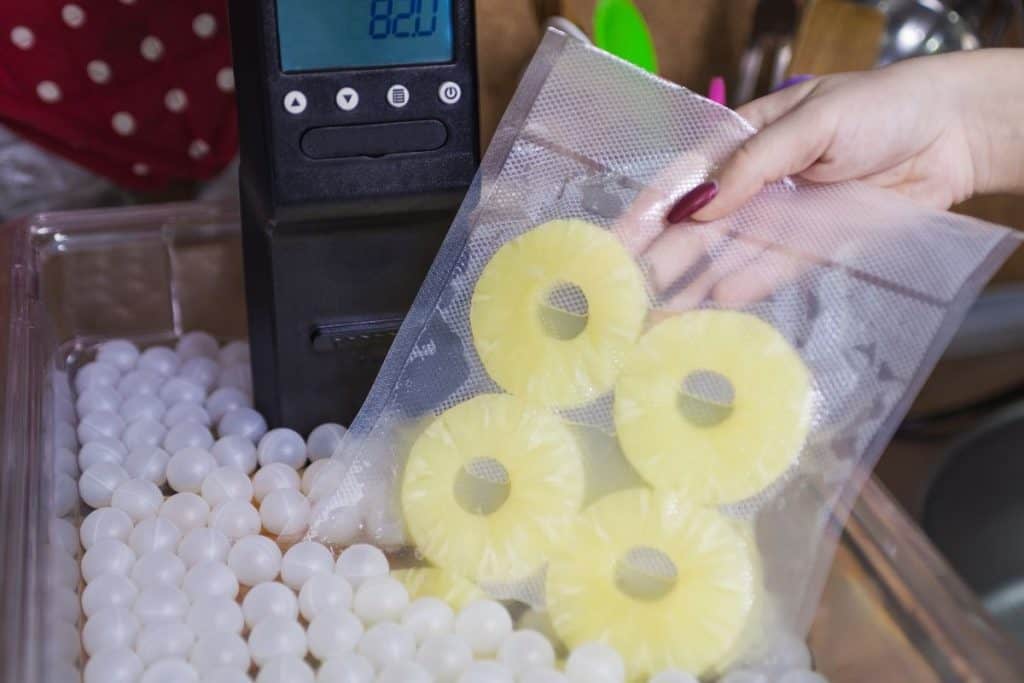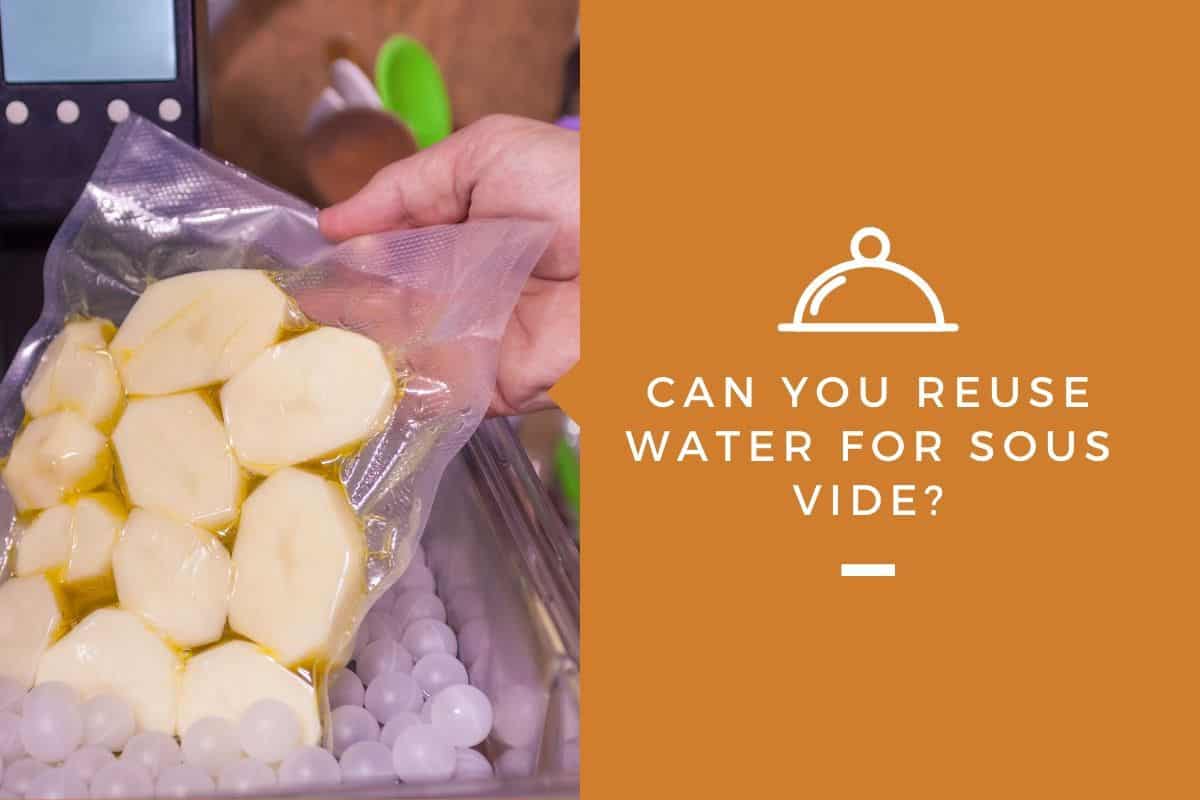Sous vide is a French cooking technique that literally means “under vacuum.” This cooking style is not as widely understood and used as more common styles, so there are often questions regarding sous vide that many think only chefs at high-end restaurants might know the answers to.
Getting more familiar with this technique just requires some knowledge and experience.
Can you reuse water for sous vide? Yes, sous vide water can be reused. However, it should be changed every 5 to 15 days. Deciding on when to change the water depends on how often the sous vide is used for cooking, as well as the water quality itself. It is ideal to start out by changing the water about once a week.
When cooking meat and vegetables, it can be difficult to achieve the right texture. Using the sous vide method can help you get better results.
This type of cooking requires certain measures to ensure that the food turns out just right, which includes knowing when to change out the water.
How Often Should You Change Sous Vide Water?
Sous vide water should be changed when it gets too murky, has visible particles floating in it, and/or smells off. People who use this water bath method on a regular basis tend to get a good idea of when to change it out based on trial and error.
A common misconception with the sous vide method is the idea that the water needs to be changed after each use – you do not need to do this!
Since the food items placed into the water bath are in vacuum-sealed bags, the freshness of the water really does not matter. A good average range to consider when changing the water is between every few days to two weeks.
Signs It’s Time to Change Sous Vide Water
Even with daily usage and the cooking of different meats, there is no real need to change out the sous vide water very frequently.
Aside from the general range in the number of days you should wait before changing out the water, there are other signs that can tell you it is time to dump out and refill your water bath:
- The water becomes murky and unclear
- There are visible particles floating in the water
- There is a bad odor emanating from the water
- There is a hole in the vacuum bag (in which case you should replace the bag as well)
- If anything has gotten into the water that should not have, or if it has been tampered with
If any of the above situations take place, you should empty out the water from the sous vide and refill it before the next usage. Even when changing out the water, though, it is helpful and important to know that that same water can be used for other things.
Other Uses for Sous Vide Water
As mentioned, sous vide water can be changed out every few days or so. This means that it can be reused quite a bit. Using fresh water as opposed to water from a few days prior really makes no difference at all in terms of the desired outcome.
In today’s western approach to hygiene, we have gotten used to thinking that things must always be cleaned out and changed out after every use. While this may be the ideal case for many things, it is not that way for sous vide cooking.
Sous vide water can be reused in terms of leaving it in the water bath for a little while, as well as when it is time for it to be discarded.
The general amount of time and the signs for when to change the water were discussed. But there are also other uses for the water when you want to change it out of the sous vide. Some of these uses include:
- Washing or soaking your dishes
- Watering your plants (once the water from the sous vide has cooled)
- Giving it to your pets as drinking water (and even drinking it yourself, if you’re up for that!)
[Source: Jason Logsdon ]
Keeping Sous Vide Water Clean

There are various reasons why people may feel the need to change the water of their sous vide more frequently rather than less so. One main reason is the “cleanliness” of the water, and the thought that bacteria could grow in standing water that is heated at high temperatures, and then cooled, repeatedly.
While the food itself is safely within the vacuum bag, not exposed to the water, the concern for food hygiene is understandable. Some suggest adding vinegar to the water, as the acetic acid may help kill any bacteria that may end up in the water.
If you live in an area with hard water, this addition can also help mineral deposits from accumulating on the walls of the pot or Dutch oven.
Which Type of Vacuum Bags to Use
There are many different types of bags that can be used “under vacuum” (the literal translation of the French phrase “sous vide”). For that first starting out, it is fine to use regular Ziploc bags, and sometimes those are even preferred over vacuum bags designed specifically for sous vide cooking.
Aside from Ziploc bags, plastic wrap can be used for some foods, as well as canning jars. It all depends on the temperature of the food being cooked, as well as the type of food.
With specific sous vide vacuum bags, they can be used anytime you are cooking sous vide, and do not have restrictions like Ziploc bags do. Here is a link with more in-depth information on the different types of sous vide containers that can be used.
Safe Cooking Temperatures for Sous Vide
When cooking sous vide, aside from knowing when it is best to change out the water, it is also very important to know at exactly what temperatures different foods should be cooked at. The rules of food safety are important, no matter what cooking technique is used.
Not only is this information vital in ensuring that raw foods such as different kinds of meat get cooked at the right level to kill bacteria and prevent food-borne illnesses, but it is also necessary to know how to retain the moisture.
According to Cook’s Illustrated, to prevent bacterial growth, most foods must be cooked at or above 130°F/54.5°C. If cooking below that temperature, it is important to sear the meat first to kill any bacteria on the skin.
Another advantage of searing meat before sous vide is to help retain the moisture and tenderness of the meat.
As with cooking any food, using any method, always keep food out of the “danger zone.” (USDA) Bacterial growth thrives at temperatures between 40 °F – 140 °F. This is why it is dangerous to cool food on the counter or put hot food directly into a refrigerator. Cook’s Illustrated recommends rapidly chilling any food you intend to refrigerate after sous vide.
In Conclusion
When it comes to sous vide cooking, a common question asked is, “how often should I change the water?”. Knowing that it is not required to change the water very frequently enables you to focus more on the culinary art of the practice itself, as well as the bags used to create for a more desirable outcome.
Being aware of the things to look out for when it comes to bacteria and illness prevention is key with sous vide. If you know the signs and stick to the general guidelines with changing out the water, you can be sure to have a wonderful experience with this unique style of cooking.

